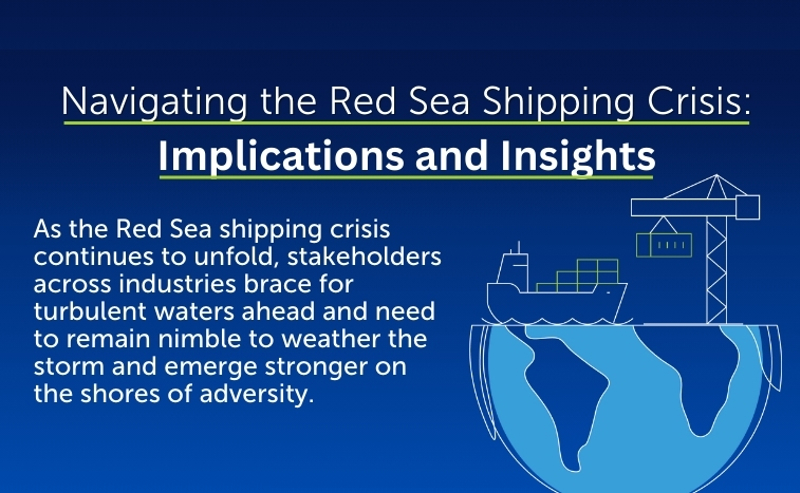In the wake of the Red Sea shipping crisis, the global maritime landscape finds itself grappling with unprecedented challenges. Stemming from Houthi rebel attacks on cargo vessels and tankers, the crisis has thrust the Suez Canal, a vital artery of international trade, into a state of uncertainty. As hundreds of vessels circumvent the turmoil by charting lengthy detours around southern Africa's Cape of Good Hope, the reverberations are palpable, raising poignant questions about supply chain integrity and inflationary pressures.
Supply Chain Disruption
The ramifications of the Red Sea shipping crisis reverberate deeply within global supply chains. With a staggering 30% of global container trade traversing the Suez Canal, the disruption strikes at the heart of logistical efficiency. Compounded by concurrent challenges such as drought-induced blockages in the Panama Canal, the crisis heralds a period of reckoning for industries reliant on seamless transit routes.
The ripple effect is palpable, as Europe-based auto plants grapple with temporary production shutdowns due to delayed parts procurement from Asia. The resilience of auto supply chains, particularly for new-energy vehicles (NEVs), faces a litmus test amidst fluctuating shipping dynamics.
Navigating Cost Escalation
The surge in shipping costs emerges as a salient manifestation of the crisis. As vessels reroute to circumvent the tumultuous Red Sea, transit times burgeon, amplifying freight expenses manifold.
According to CNBC, rates for freight traveling from Asia to northern Europe more than doubled in January, “to above $4,000 per 40-foot-equivalent unit (container). Asia-Mediterranean prices climbed to $5,175 per container. Some carriers have announced rates above $6,000 per 40-foot container for Mediterranean shipments starting mid-month, with surcharges ranging from $500 to $2,700 per container.”
The ramifications extend beyond mere monetary figures, precipitating a cascade of logistical challenges. The extent to which this will feed into contracted rates is unclear. The uncertainty underscores the vulnerability of retailers reliant on sea freight, necessitating strategic recalibrations in procurement strategies.
Inflationary Tides
As shipping costs ascend to unprecedented heights, the specter of inflation looms large on the horizon. The intricate interplay between shipping dynamics and consumer price indices underscores the intricate dance of economic forces.
The duration of the diversions due to the crisis is also impacting the available capacity and container availability. Though manufacturing orders are easing, containers spending more time on the water is inhibiting them from being used by manufacturers to import to the US. According to CNBC, it is estimated that widespread re-routing around Africa could reduce effective global container shipping capacity by 10%-15%.”
It is possible for this to bleed into Peak Season (July-October) and cause an issue of inflation and delays unless shippers get ahead of it and plan accordingly.
The projections from companies such as J.P. Morgan, Sea Intelligence and more forecast a tangible impact on global core goods inflation, a testament to the systemic reverberations of the crisis. The confluence of cyclical factors, coupled with the lingering specter of supply chain disruptions, portends a period of economic recalibration.
As the Red Sea shipping crisis continues to unfold, stakeholders across industries brace for turbulent waters ahead. While the contours of the crisis remain fluid, resilience and adaptability emerge as linchpins of navigational strategy. The road ahead demands nimble responses and collaborative endeavors to weather the storm and emerge stronger on the shores of adversity.
contact us
Contact Us

